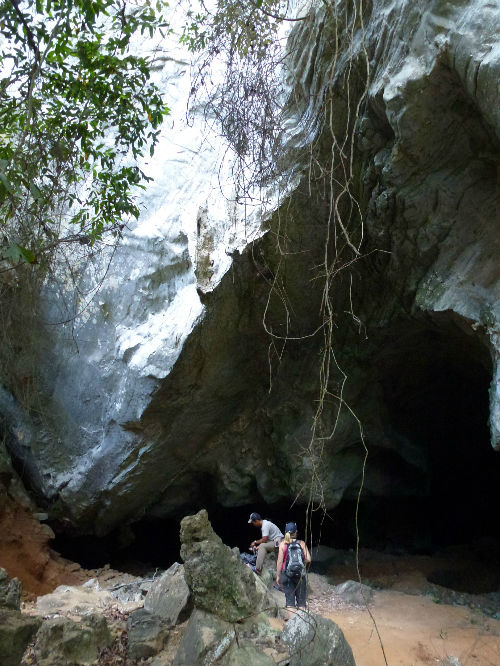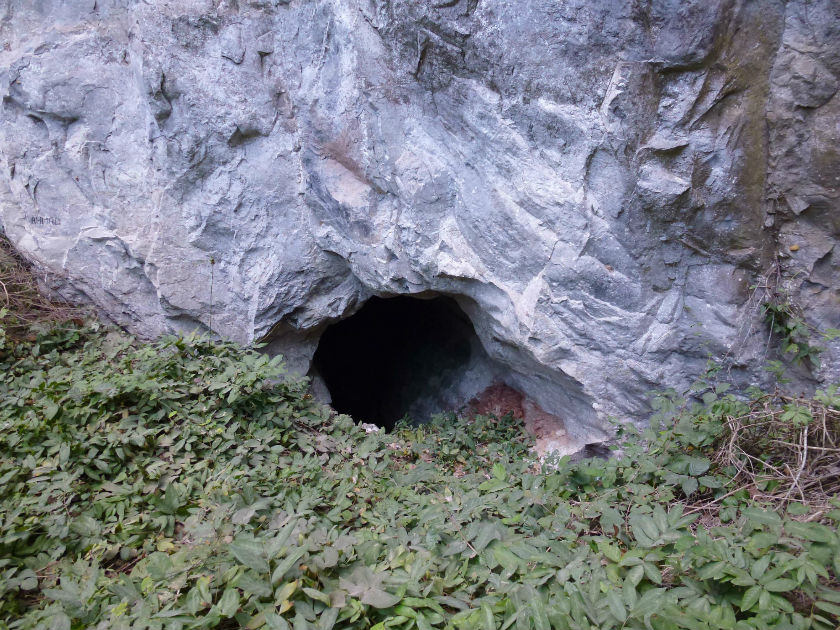LANGKAWI, March 1 — The passage grows narrower and darker as we move deeper underground. We climb down into a lower chamber, our hands grasping the worn limestone for balance.
The dank air is ripe with the smell of guano and filled with the echoed sound of fluttering wings. Our guide’s flashlight picks out the distant ceiling. Countless bats hang suspended high above us, with dozens flittering through the beam of the light.
“These are Asian roundleaf bats, Hipposideros larvatus,” says our guide Othman Ayeb, a locally based naturalist and founder of Rimbawi GeoDiscovery.
By recent estimates, the Gua Pinang cave is said to hold at between eight to ten thousand roosting bats -- more than all the other cave systems in Langkawi’s archipelago added together.
And yet Gua Pinang remains almost unknown.
People who live nearby are aware of the cave, yet very few have ever visited. Part of the reason is the cave’s relative inaccessibility.
We set out from the fishing jetty at Kubang Badak in a traditional wooden sampan. The oars make gentle splashes in the green water as we glide through the silent mangroves, but when we reach the river mouth the long-tail motor chugs nosily to life, sending the boat racing across the ever-widening estuary that leads out to sea.
We stay close to the coast, visiting an abandoned charcoal kiln towered over by durian trees planted almost a century ago when this was a trading post for Chinese merchants who ferried goods from Penang to the upper reaches of the Malacca Straits and further still into the Andaman Sea.
A few minutes further up the coast is a tiny river, hardly more than a stream. At low tide, it is almost impassable and even at mid-tide our boatman has to struggle with the oars to free the boat from the mangrove roots.
We step ashore and clamber uphill. Othman spent a great deal of time and effort clearing a steep pathway through the edge of the forest.
Thick fishing ropes act as banisters on the more challenging parts of the climb. In thirty-two degree heat and high humidity we are all sweating, and some of us breathless, by the time we reach the mouth of the cave.
The Gua Pinang is at the north of Langkawi’s eponymous main island. Even though we are still in Malaysia our phones beep with a message saying “Welcome to Thailand”, the closest mainland. This is a place to beware of international roaming charges. But there is no phone reception underground.
Though we only explore a fraction of the cave, it still takes 20 minutes before we see sunlight again, emerging from a different entrance.
As well as bats and guano, there are stalactites and stalagmites of myriad sizes and shapes, and miniature landscapes of mosses and lichens, home to many unusual insects.
The bats also play a major role in the delicate balance of the local ecosystem, eating insects, including millions of mosquitoes a year in an area not immune to the occasional outbreak of dengue.
In the not so distant past, there were other caves adjacent to Gua Pinang. The older villagers remember them. Which brings us to the other reason Gua Pinang doesn’t appear on any of the tourist maps – the cave is situated on land the state government has leased to the French cement company Lafarge.
The neighbouring limestone caves the villagers remember were destroyed to be used as part of the cement manufacturing process.
“They were called Gua Tok Sabong and Gua Balai,” says Othman. “Gua Tok Sabong was famous for its stalactites. It was much bigger than Gua Pinang.”
The Lafarge cement factory at nearby Teluk Ewa is enormous and could easily be the set for a dystopian science fiction movie.
Its contrast to the natural beauty of the surrounding limestone peaks, rainforests, beaches and mangroves is incongruous. But Lafarge is also one of the biggest employers on this part of the island, an area of half-built and ramshackle housing where tourism has only tentatively encroached.
Fishing is still a major occupation, not just as a commercial activity, but as a vital necessity. Many of the locals depend on the cement factory for steady work.
In 2007, UNESCO accorded Langkawi Geopark status in recognition of its unique geological heritage. This accolade has done much to boost Langkawi’s reputation as an international destination for tourists and naturalists.
But the Geopark status is up for review soon, with a UNESCO delegation expected in the upcoming months to decide if it will re-validate Langkawi’s status.
“On the notion that a Geopark must benefit its people, some economic activities may threaten natural resource conservation,” said a spokesperson for Friends of Langkawi Geopark (FLAG) on their Facebook page. “But whatever development there is, they must be sustainable.
“The cement plant, no doubt, was established long before Langkawi Geopark was instituted and has served well in helping develop Langkawi and the country. Our concern now is its expansion that might encroach and destroy Gua Pinang. Geopark managers should talk to them on protecting this geosite.”
“Gua Pinang is approximately three times the size of Gua Kelawar,” explains Othman Ayeb, referring to the popularly named Bat Cave, one the natural attractions in Langkawi’s Kilim River mangrove area.
“We hope that we can save Gua Pinang. By bringing visitors here, we can raise awareness that they exist. This is a unique eco-system that should be protected” says Othman Ayeb, as we navigate the trail back downhill to meet our waiting boatman. “Tourism Malaysia have even featured the caves in their latest promotional video for Langkawi.”
Last Friday, LaFarge issued a statement about this very issue.
“Lafarge Malaysia celebrates 30 years of operations in Langkawi this year,” says Sekar Kaliannan, Lafarge’s Langkawi plant manager, in the statement.
“Throughout our operations, we have been part of the community, with a significant socio-economic footprint. We are committed to biodiversity and environmental protection and we will continue to work with our local stakeholders and experts towards this end.
“With regards to Gua Pinang, we are aware of its existence within the vicinity of our quarry operations. There are no plans for us to develop or quarry this area, which will be preserved under the designated buffer zone.”
“This is very good news,” says Othman Ayeb. “Now we can start to create more awareness about Gua Pinang and come up with a proper proposal to the state government about further promoting this cave as an important natural site in Langkawi.”






















